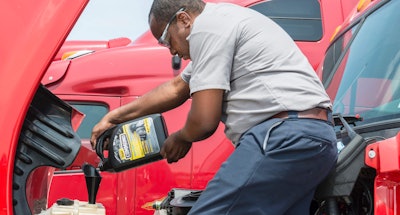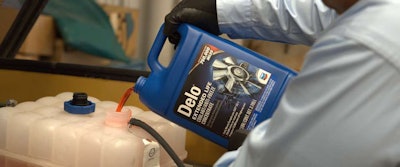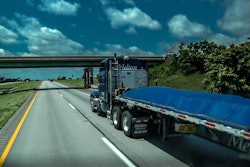

“Contaminants like exhaust gas, oil, manufacturing residues, [methane] and [sulfate] can enter the cooling system and increase corrosivity,” says Dr. David Turcotte, Valvoline’s director of technology and product development.
Colin Dilley, vice president of technology for Prestone, says there are three main reasons coolant degrades: Inhibitors are used-up and unable to prevent corrosion from occurring; chemical incompatibility with certain coolants and certain cooling system parts; and the breakdown of the ethylene glycol that provides freeze and boil protection.
Years ago, coolants lasted up to 36,000 miles, but today’s heavy duty coolants – thanks to the integration of more durable organic inhibitors – can stretch upwards of 600,000 miles, with many warranted to 1 million miles. It’s always best to follow the manufacturer’s guidelines for fluid choice and exchange intervals, but Turcotte says often there are multiple ways to approach coolant maintenance and cooling system service.
“The more the severe the duty, the tougher it is on the coolant,” adds Stephannie Crane, Peak Commercial & Industrial division brand manager. “Everything is effected by how challenging the duty cycle is.”
The age of the engine, Dilley says, will also mean there are significant differences in cooling-system technologies.
“For example, older systems used to leak, which would create a natural replenishment as users topped off to keep the system full. However, new cooling systems don’t leak like they used to, so now that fluid may only last 20,000 miles before damage starts to occur,” he says.
Once coolant has lost its ability to protect against freeze and boil-over, it needs to be replaced. Some of the older coolant remains in the system after a drain, which means the brand new coolant is already starting out with some degree of depletion.
“Better would be to flush out the old coolant with water to replenish the whole system,” Crane says. “Of course, this is more work and you have to make sure you have the proper mix of coolant and water in the system when you are done.”
Flushing, Dilley adds, also cleans out any corrosive byproducts that may be present and prevents future blockages from occurring.
“In some cases you used to be able to switch between coolant technologies, for example, from silicate to OAT or OAT to NOAT,” he says, “but, these will always leave an unknown amount of gunk behind.”
Turcotte says most heavy duty vehicles will drain the coolant adequately by gravity, but machines that evacuate and fill the cooling system are a fast way to replace all the fluid and control waste for proper disposal.
“It’s important to remove all the old fluid and refill completely with the new fluid,” he adds. “Always top off with the same coolant, properly diluted, during service.”
Pre-diluted coolants are mixed with deionized water, but most concentrated coolants are designed so that it can be diluted with water of any reasonable quality.
“The average consumer, unless they buy deionized water, does not have access to this in large amounts,” Crane says. “Like almost anything in life, starting with better quality gives better results but not having ASTM quality water will not in the end make much difference.”
Turcotte says water should be demineralized if possible, which helps prevent hard water scale and deposits, “but water of drinking quality is the minimum acceptable choice for dilution,” he adds.
Water that is full of salts, chloride or hard water will cause deposits and eventually block the radiator.
“Chloride in the water, which is common in wells after a winter of salting the roads, will accelerate the corrosion of all metals and lower the engine life and reduce performance,” Dilley adds. “Why go through all the work to properly flush and fill a system, buy a high-quality coolant, but then cause potential damage with the least costly material?”


![Penske Logistics stock image – trailer[1]-2018-04-09-13-06](https://img.ccjdigital.com/files/base/randallreilly/all/image/2018/04/ccj.Penske-Logistics-stock-image-trailer1-2018-04-09-13-06.png?auto=format%2Ccompress&fit=crop&h=167&q=70&w=250)








